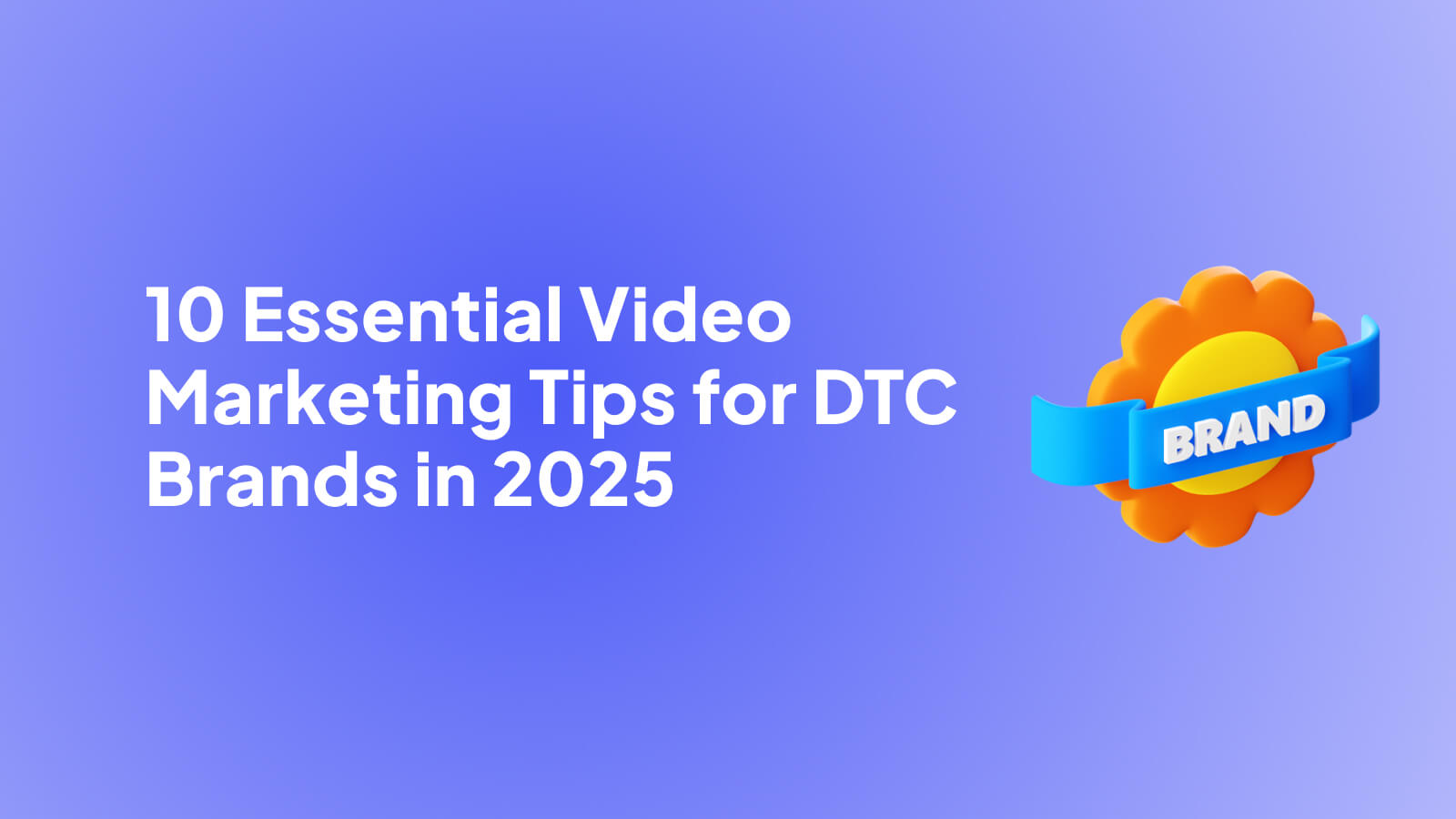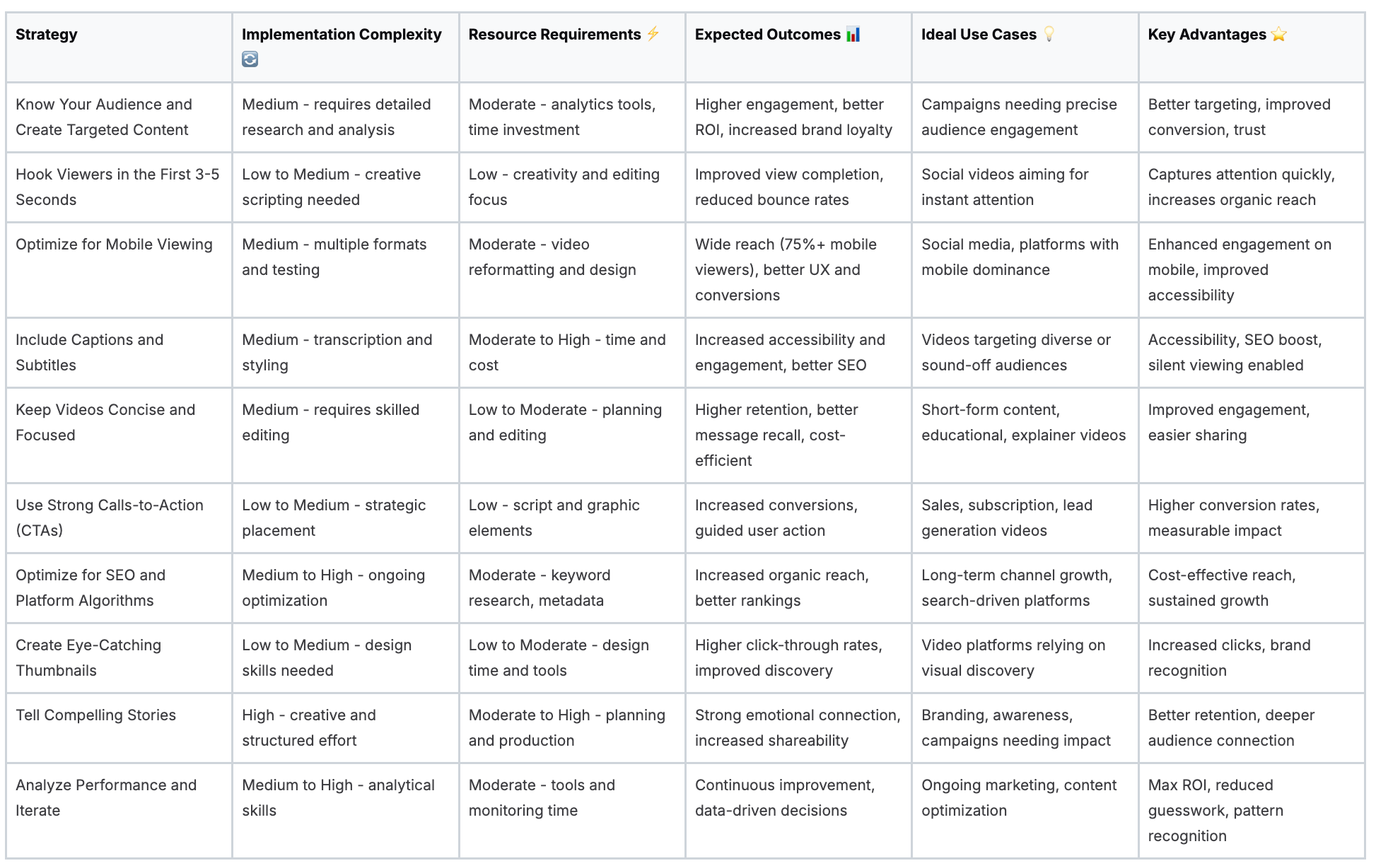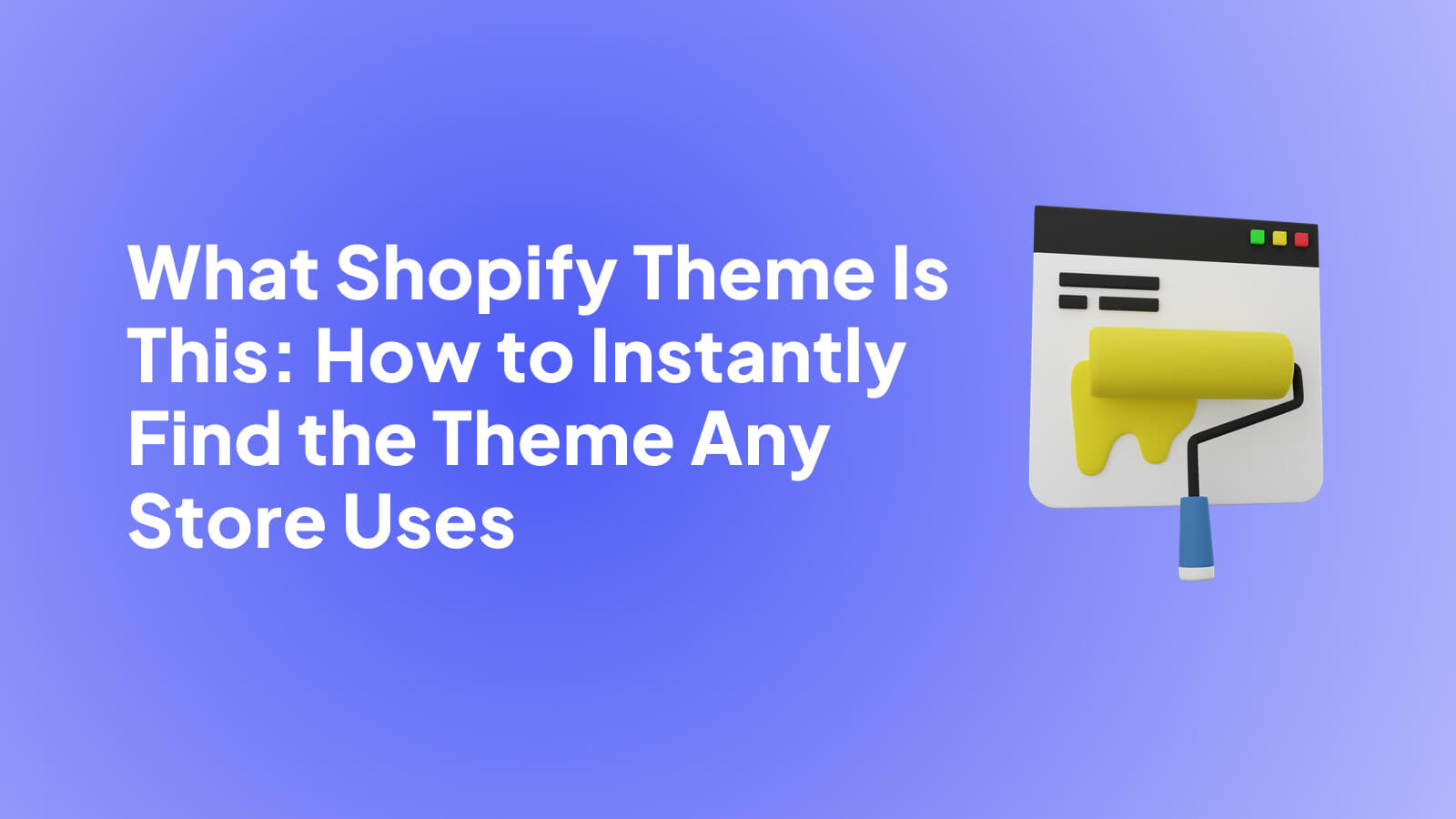
- 1. Know Your Audience and Create Targeted Content
- 2. Hook Viewers in the First 3-5 Seconds
- 3. Optimize for Mobile Viewing
- 4. Include Captions and Subtitles
- 5. Keep Videos Concise and Focused
- 6. Use Strong Calls-to-Action (CTAs)
- 7. Optimize for SEO and Platform Algorithms
- 8. Create Eye-Catching Thumbnails
- 9. Tell Compelling Stories
- 10. Analyze Performance and Iterate
- 10 Key Video Marketing Tips Comparison
- From Plan to Profit: Putting Your Video Strategy into Action
In the competitive world of direct-to-consumer (DTC) e-commerce, standing out isn't just an advantage; it's essential for survival. While countless brands compete for attention, video has emerged as the undisputed champion for capturing interest, building trust, and driving sales. But simply creating a video is not enough. The key lies in strategic execution, especially for Shopify merchants who want to leverage shoppable video directly on their product pages. These aren't just abstract theories; they are actionable video marketing tips designed to turn passive viewers into active, loyal customers.
This article moves beyond generic advice to give you a concrete playbook for creating high-impact videos that resonate with your audience and deliver tangible results. We'll dive deep into ten proven strategies, exploring everything from mastering the crucial first few seconds to optimizing for the algorithms that can make or break your reach. As you refine your production workflow, you might find that tools can significantly boost your efficiency; to explore this further, you can consult a comprehensive AI video editing guide for modern techniques.
Get ready to transform your approach and learn how to create compelling content that not only gets seen but also converts. Let's get started.
1. Know Your Audience and Create Targeted Content
The most foundational of all video marketing tips is to deeply understand who you’re talking to. Creating a video without a specific audience in mind is like sending a message in a bottle; you can only hope it reaches the right person. For Shopify and DTC merchants, this means going beyond basic demographics to uncover your audience's core motivations, online behaviors, and specific pain points your products can solve. This audience-first approach, championed by marketing leaders like Gary Vaynerchuk, ensures your content isn't just seen, but felt.

Consider Dollar Shave Club’s iconic launch video. They didn't just sell razors; they spoke directly to men frustrated with the high cost and inconvenience of buying brand-name blades. The humor and directness resonated perfectly with their target demographic, turning a simple product video into a viral sensation. This strategy is essential when creating shoppable videos, as a deep connection motivates viewers to click "buy now."
How to Implement This Strategy:
To effectively tailor your video content, start by building detailed buyer personas. These are semi-fictional representations of your ideal customer.
- Dive into Analytics: Use tools like Google Analytics and your Shopify dashboard to analyze customer demographics, purchase history, and on-site behavior.
- Survey Your Customers: Directly ask your email list or social media followers what kind of content they want to see. Inquire about their challenges and interests related to your niche.
- Monitor Social Channels: Pay close attention to comments, questions, and discussions on your posts and competitors' pages. This provides raw, unfiltered insight into what your audience truly cares about.
By grounding your video marketing in a thorough understanding of your audience, you create content that not only attracts views but also builds a loyal community and drives direct sales.
2. Hook Viewers in the First 3-5 Seconds
In today's fast-paced digital landscape, the first few seconds of your video are non-negotiable real estate. Your audience's attention span is shorter than ever, meaning you have a tiny window to prevent them from scrolling past. This critical video marketing tip, famously mastered by creators like MrBeast, involves starting with an immediate, powerful hook that grabs attention and promises value. For DTC brands, this means leading with your most compelling visual, a bold statement, or an intriguing question that makes viewers stop and watch.

Think of Nike's ads that open with a dramatic, peak-action sports moment, or Tasty's videos that show the delicious final dish before the recipe begins. They don't waste time with slow introductions. This "front-loading" strategy is crucial for shoppable video ads on platforms like Instagram and TikTok, where a strong hook directly correlates with higher engagement and click-through rates. It’s about creating an irresistible urge to see what happens next. You can learn more about creating compelling video content for social media on moast.io.
How to Implement This Strategy:
To craft a powerful hook, you need to disrupt the viewer's scrolling pattern. Focus on creating immediate intrigue and clarity from the very first frame.
- Start with the "After": Show the stunning end result of your product first. For a cleaning product, show the sparkling clean surface; for a makeup brand, show the flawless final look. This creates instant curiosity about the "how."
- Use Pattern Interrupts: Begin with an unexpected sound, a quick camera movement, or a visually jarring cut. This technique breaks the hypnotic state of social media scrolling and forces the viewer to pay attention.
- Ask a Provocative Question: Pose a question that taps into a major pain point or desire for your target audience. For instance, a skincare brand might ask, "Tired of waking up with dull skin?"
- Lead with Your Strongest Shot: Don't save your best visual for the middle. Use your most dynamic, colorful, or emotionally resonant clip right at the beginning to make an immediate impact.
3. Optimize for Mobile Viewing
In today's market, ignoring mobile optimization is a critical error, as the majority of video content is now consumed on smartphones. This video marketing tip is non-negotiable for Shopify and DTC merchants. Mobile optimization means more than just ensuring your video plays; it's about designing the entire experience for a small, vertically oriented screen. Platforms like Instagram and TikTok have built empires on this principle, proving that content created specifically for mobile users captures attention and drives engagement far more effectively.

Think about the massive success of Instagram Reels and TikTok. Their entire ecosystems are built around short, punchy, vertical videos that are easy to consume on the go, often without sound. Brands that thrive on these platforms don't just crop a landscape video; they create native content that feels at home in the feed. For shoppable videos, this means ensuring product details, calls-to-action, and any on-screen text are large, clear, and positioned to avoid being covered by platform UI elements.
How to Implement This Strategy:
To effectively optimize your videos for mobile, focus on format, readability, and initial impact. A viewer scrolling through their feed will give you only a fraction of a second to capture their interest.
- Shoot Vertically: Prioritize vertical (9:16) or square (1:1) aspect ratios. This fills the entire screen on mobile devices, creating a more immersive experience and eliminating distracting black bars.
- Design for Sound-Off Viewing: Assume your video will be watched without audio first. Use bold on-screen text, captions, and strong visual cues to convey your message. Make sure the text is large enough, using at least a 24pt font size for easy reading on small screens.
- Frame for the Feed: Keep crucial elements like your product or key text within the center 80% of the frame. This "safe zone" prevents important information from being cut off by platform interfaces or the edges of the screen.
- Test on Real Devices: Before publishing, always preview your video on various smartphones. This is the only way to catch formatting issues and ensure your content looks exactly as intended for your audience.
4. Include Captions and Subtitles
One of the most impactful video marketing tips is also one of the simplest: add captions. In today's mobile-first world, a huge percentage of users watch videos with the sound off, especially on social media feeds. By including captions or subtitles, you ensure your message is understood even in silence, significantly boosting engagement and watch time. This practice, popularized by platforms like Facebook and YouTube, makes your content more accessible to the hearing-impaired and improves comprehension for everyone.

Beyond viewer convenience, captions are a powerful tool for SEO. Search engine crawlers can read the text in your caption file, helping them understand the video's context and rank it for relevant keywords. Netflix's success with comprehensive subtitle options demonstrates how this feature enhances the user experience across diverse audiences. For Shopify merchants, this means a captioned product demo can be understood in a noisy office or a quiet library, maximizing its reach and potential for conversion.
How to Implement This Strategy:
Making your videos accessible with captions is a straightforward process that pays significant dividends. Don't just rely on auto-generated text; take the time to refine it for clarity and brand consistency.
- Edit for Accuracy: Use automatic captioning tools from platforms like YouTube or third-party services as a starting point. Always manually review and edit the text to correct errors in grammar, spelling, and brand-specific terms.
- Style for Your Brand: Customize the font, color, and background of your captions to align with your brand's visual identity. This creates a cohesive and professional look across all your video content.
- Describe Key Sounds: Enhance the experience for all viewers by including descriptions of non-speech audio in brackets, such as
[upbeat music]or[product clicks into place]. - Test Across Devices: Before publishing, check how your captions appear on different screen sizes, especially on mobile devices, to ensure they are legible and well-placed.
5. Keep Videos Concise and Focused
In an age of infinite scrolling and shrinking attention spans, brevity is power. One of the most critical video marketing tips for DTC brands is to deliver your message quickly and efficiently. Viewers decide within the first few seconds whether to keep watching, so eliminating fluff and getting straight to the value proposition is essential for retaining their interest and guiding them toward a purchase. This "less is more" philosophy is the engine behind the explosive growth of platforms like TikTok and Instagram Reels.
Think of Dropbox’s original explainer video. In just over two minutes, it simply and effectively explained a brand-new concept, helping the company acquire millions of users. It didn't waste time on technical jargon; it focused on a single problem and presented a clear solution. For shoppable videos, this means showcasing the product's core benefit immediately to hook the viewer and encourage them to explore more, directly impacting your conversion rates.
How to Implement This Strategy:
To master the art of concise video, focus on ruthless editing and a clear, singular message. Effective ecommerce video production hinges on maximizing impact in minimal time.
- Follow the 'One Video, One Message' Rule: Dedicate each video to a single idea, feature, or benefit. Trying to cover too much ground will confuse your audience and dilute your core message.
- Plan and Script Everything: Before you even press record, outline your key talking points and visuals. A solid plan prevents rambling and ensures every second of your video serves a purpose.
- Use Jump Cuts and Fast Pacing: Edit out every unnecessary pause, "um," and filler word. Fast-paced editing and dynamic cuts help maintain viewer momentum and keep them engaged from start to finish.
By creating focused, high-impact videos, you respect your audience's time, making them more likely to watch until the end and act on your call to action.
6. Use Strong Calls-to-Action (CTAs)
A great video can entertain and inform, but without a clear directive, it’s a missed opportunity. One of the most critical video marketing tips is to guide your viewer’s next step with a strong call-to-action (CTA). For Shopify and DTC merchants, the CTA is the bridge between viewer engagement and conversion, turning passive watchers into active customers. This principle, born from direct response marketing and perfected by e-commerce platforms, is what makes shoppable videos so powerful.
Think about how effective a simple "Shop Now" button is when it appears at the exact moment a viewer is impressed by a product demonstration. It removes friction and capitalizes on peak interest. Similarly, SaaS companies offering a "Start Your Free Trial" CTA within a feature tutorial convert interested prospects by providing an immediate, low-risk entry point. The goal is to make the desired action obvious, easy, and compelling.
How to Implement This Strategy:
To craft CTAs that drive results, you need to be specific, urgent, and visually clear. A vague CTA will only confuse your audience and hurt your video's performance.
- Use Action-Oriented Language: Start your CTAs with strong verbs. Instead of "Our Products," use "Shop the Collection." Replace "Learn More" with "Discover the Benefits."
- Create Urgency or Scarcity: Motivate immediate action with phrases like "Shop Now for 20% Off - This Week Only!" or "Get Yours Before It’s Gone." Time-limited offers encourage viewers to act now rather than later.
- Make it Visually Prominent: Your CTA should stand out. Use contrasting colors for buttons, place them in uncluttered areas of the screen, and ensure they are legible on all devices, especially mobile.
- Test and Optimize: Don't assume your first CTA is the best. A/B test different wording, colors, and placements (e.g., mid-roll vs. end-screen) to see what resonates most with your audience and drives the highest click-through rates.
By strategically implementing powerful CTAs, you transform your videos from passive content into active sales and lead generation tools, directly impacting your bottom line.
7. Optimize for SEO and Platform Algorithms
Creating a brilliant video is only half the battle; ensuring it gets seen is the other. This is where search engine optimization (SEO) and platform-specific algorithm optimization become critical video marketing tips. Just as you optimize your Shopify product pages for Google, you must optimize your video content for the platforms it lives on, from YouTube’s search engine to Instagram’s discovery feeds. SEO authorities like Brian Dean of Backlinko have long proven that strategic optimization is key to unlocking organic reach.
For example, a DTC brand selling sustainable yoga mats can optimize a "How to Clean Your Yoga Mat" video for YouTube by targeting keywords like "eco-friendly yoga mat care." By including these terms in the title, description, and tags, the video is more likely to appear when a potential customer searches for that exact solution. To maximize visibility on other platforms, you can find advanced tips to make Reels go viral that focus on algorithmic triggers like watch time and engagement.
How to Implement This Strategy:
Effectively optimizing your videos requires a platform-aware approach that blends classic SEO with social media savvy.
- Conduct Keyword Research: Use tools like Ahrefs or Google Keyword Planner to find terms your target audience is searching for. Focus on long-tail keywords that indicate high purchase intent.
- Write Compelling Metadata: Craft clear, keyword-rich titles (ideally under 60 characters) and detailed descriptions. Don't forget to use relevant tags and hashtags to help algorithms categorize your content. You can learn more about how to add video to a Shopify product page and optimize it for discovery.
- Create Custom Thumbnails: Design eye-catching, high-contrast thumbnails that clearly communicate the video's value and entice users to click.
- Encourage Engagement Signals: Actively prompt viewers to like, comment, and share. Responding to comments quickly sends positive signals to algorithms, boosting your video's visibility.
8. Create Eye-Catching Thumbnails
Your video thumbnail is the billboard for your content; it's the single most important factor determining whether a potential customer clicks play or scrolls past. In a crowded feed on social media or in YouTube search results, an eye-catching thumbnail is non-negotiable. It's the first visual handshake with your audience, promising value and intrigue. This principle, perfected by YouTube creators like MrBeast, is a crucial video marketing tip for grabbing attention instantly and boosting click-through rates.
Think of Marques Brownlee's (MKBHD) tech review thumbnails. They are clean, feature a high-quality product shot, and often include his expressive reaction, instantly conveying his verdict on a device. For DTC brands, this translates to using a thumbnail that showcases the product in its best light, perhaps with a human element, to create an emotional connection and curiosity. A great thumbnail doesn’t just get a click; it sets the stage for the value your video will deliver.
How to Implement This Strategy:
Designing effective thumbnails doesn't require a master's degree in graphic design, especially with tools like Canva. Focus on clarity, contrast, and curiosity.
- Prioritize High-Contrast Visuals: Use bright, bold colors that pop against the platform's user interface. A clear, high-resolution image of your product or a person using it is essential.
- Incorporate Minimal, Bold Text: If you use text, keep it to three or four impactful words. Ensure the font is large and easy to read even on a small mobile screen.
- Show Human Faces: Thumbnails featuring faces with clear emotions (excitement, surprise, curiosity) tend to have higher click-through rates as they tap into our natural human connection.
- Test and Analyze: Create two or three different thumbnail variations for a single video. Test them on different platforms or use YouTube's "Test & Compare" feature to see which one performs best with your audience.
9. Tell Compelling Stories
Facts and figures can inform, but stories are what connect and persuade. Storytelling transforms your video marketing from a simple product showcase into a memorable experience that builds a genuine emotional bond with your audience. For DTC brands, this means weaving a narrative that makes your product more than just an item; it becomes part of a larger, more meaningful story. This principle, championed by frameworks like Donald Miller's StoryBrand, positions the customer as the hero and your brand as the guide, creating powerful resonance.
Think about Airbnb's experience-focused videos. They don't just show a room; they tell the story of a traveler connecting with a new culture or a host sharing their passion. These narratives evoke feelings of belonging and adventure, which are far more compelling than a list of amenities. For shoppable videos, a strong story gives viewers a powerful emotional reason to click the "buy" button, as they are not just purchasing a product but buying into the experience and transformation it represents.
How to Implement This Strategy:
To turn your marketing videos into captivating stories, focus on fundamental narrative elements. Position your customer as the protagonist on a journey.
- Use a Narrative Framework: Start by introducing a conflict or challenge your target customer faces. Present your product as the tool or guide that helps them overcome it, leading to a successful resolution. This is the core of the hero's journey.
- Focus on Emotion: Don't just list features. Show the emotional impact of your product. How does it make the customer feel? Confident? Relieved? Joyful? Use visuals, music, and pacing to build this emotional arc.
- Show, Don't Just Tell: Instead of saying your product is "high quality," show a craftsman carefully constructing it. Instead of saying it "saves time," show a customer enjoying their newfound free time with family.
By adopting storytelling, you create video content that sticks in the viewer's memory long after they've finished watching, building brand loyalty and driving more meaningful conversions.
10. Analyze Performance and Iterate
Launching your video is just the beginning, not the end. The most successful video marketing strategies are dynamic, evolving based on data-driven insights. This means moving beyond a "set it and forget it" mindset to one of continuous monitoring, analysis, and optimization. This iterative process, championed by platforms like YouTube and analytics leaders like HubSpot, is what separates stagnant campaigns from those that generate compounding returns.
Think about how Netflix uses viewing data not just to recommend content but to greenlight entire productions. They analyze which scenes viewers rewatch, where they drop off, and what actors or genres hold attention the longest. For DTC brands, this translates to understanding which part of a product demo drives the most clicks or which video style generates the highest add-to-cart rate. Analyzing this data is crucial for refining your approach and maximizing your ROI.
How to Implement This Strategy:
To turn raw data into actionable improvements, you need a structured approach to analysis. This allows you to consistently refine your video marketing tips and tactics for better results.
- Track Key Metrics: Go beyond vanity metrics like view count. Focus on watch time, audience retention rate, click-through rate (CTR) on your CTAs, and, most importantly, conversion rate. These metrics reveal how engaging and effective your content truly is.
- A/B Test Your Elements: Systematically test different video thumbnails, titles, call-to-action phrasing, and even video lengths. Small changes can lead to significant improvements in performance.
- Schedule Regular Reviews: Set aside time weekly or bi-weekly to review your video analytics. Look for trends, identify top-performing content, and diagnose underperforming videos to understand why. For a deeper dive into this process, you can explore more about video marketing analytics on moast.io.
By embracing a cycle of creating, measuring, and learning, you ensure that every video you produce is smarter and more effective than the last, driving sustainable growth for your brand.
10 Key Video Marketing Tips Comparison

From Plan to Profit: Putting Your Video Strategy into Action
We have journeyed through a comprehensive toolkit of advanced video marketing tips, each one designed to empower Shopify and DTC merchants in a competitive digital marketplace. Moving from simply creating videos to engineering a powerful, sales-driving video strategy is a process of consistent application, sharp analysis, and strategic refinement. The path to e-commerce success is paved with more than just great products; it is built on compelling narratives and seamless customer experiences, where video is the primary architect.
Synthesizing Your Strategy for Maximum Impact
The ten core principles we've explored are not isolated tactics but interconnected components of a holistic machine. Think of it this way: a powerful hook (Tip #2) is wasted without mobile optimization (Tip #3), and a compelling story (Tip #9) falls flat without a strong call-to-action (Tip #6). The most successful brands understand this synergy. They don't just follow a checklist; they weave these video marketing tips into the very fabric of their brand identity and operational workflow.
The ultimate goal is to create a frictionless journey from discovery to purchase. This means understanding your audience deeply (Tip #1), captivating them instantly, and guiding them logically toward the next step. Every detail, from eye-catching thumbnails (Tip #8) to accessible captions (Tip #4), contributes to building trust and reducing the friction that so often leads to abandoned carts.
Your Actionable Next Steps
To avoid feeling overwhelmed, start small but be strategic. Your immediate plan should be to implement just one or two of these new insights into your very next video campaign.
- For your next product launch video: Focus intensely on the first three seconds. How can you create immediate intrigue or showcase the primary benefit before a viewer can even think about scrolling away?
- For your next social media ad: Prioritize creating a separate, vertically-oriented cut specifically for mobile viewers. Add bold, easy-to-read captions to ensure your message lands, even with the sound off.
- For your existing product pages: Review your analytics (Tip #10). Identify your highest-performing social videos and consider how you can repurpose them to enhance your on-site experience and boost conversion rates.
By focusing on incremental improvements and meticulously tracking the results, you will build momentum. Each successful test provides valuable data, refining your understanding of what resonates with your specific audience. This iterative process is the engine of sustainable growth, turning your video marketing from a creative outlet into a predictable and profitable revenue stream. Mastering these video marketing tips is no longer optional; it is the definitive advantage for the modern DTC brand.
Ready to turn your best social videos into high-converting, shoppable experiences directly on your Shopify store? Moast makes it simple to import your TikToks and Instagram Reels, creating beautiful video galleries on your product pages in under five minutes. Start converting more viewers into customers today by visiting Moast and setting up your free shoppable video feed.
Related content
Turn your videos into sales
Boost conversions by up to 30% by turning your existing TikToks and Reels into shoppable videos directly on your Shopify store.












